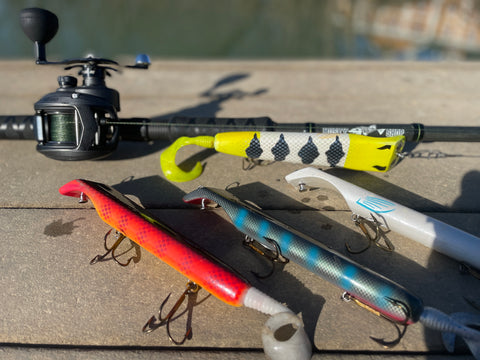Titan : Dive and Rise Musky Lure

Dive and rise lures have been a part of musky fishing from it's earliest days. Wooden sticks with little more than hooks added to them have been some of the most successful presentations of all times. Muskies from Canada to Kentucky can seem to resist a lure than plunges head long in to the abyss and surges back to the surface. One can not argue with the effectiveness of the classic dive and rise presentations but as the sport of musky fishing makes leaps and bound forward little has changed in the world of dive and rise.

As a professional musky guide, writer, musky podcast host, and editor of Musky 360 I get asked a lot of questions from musky anglers that are looking to up their game. While many of the questions that revolve around tactics, seasonality and patterning are easily answered one question kept popping up that was far more difficult to explain...how do I tune a dive and rise musky lure?
Any seasoned musky angler can tell you that tuning a musky dive and rise lure to perfection is an art form. You tweak this, turn that, a little bit of fussing here and there and then you throw a test cast to see how it's running. A process that is repeated again and again until the desired results are achieved and then repeated yet again when inevitably things get knocked out of tune.

How are new anglers or those that don't have dive and rise experience suppose to know exactly how a great dive and rise bait looks like in the water. Or know when they are wasting precious time on the water attempting to tune a wooden dive and rise bait that is a "dud" that simply will not run effectively due to the piece of wood it was made from. Looking at it from this perspective the reasons for many musky anglers frustration with dive and rise baits started to come into focus. (Read Full Article)
